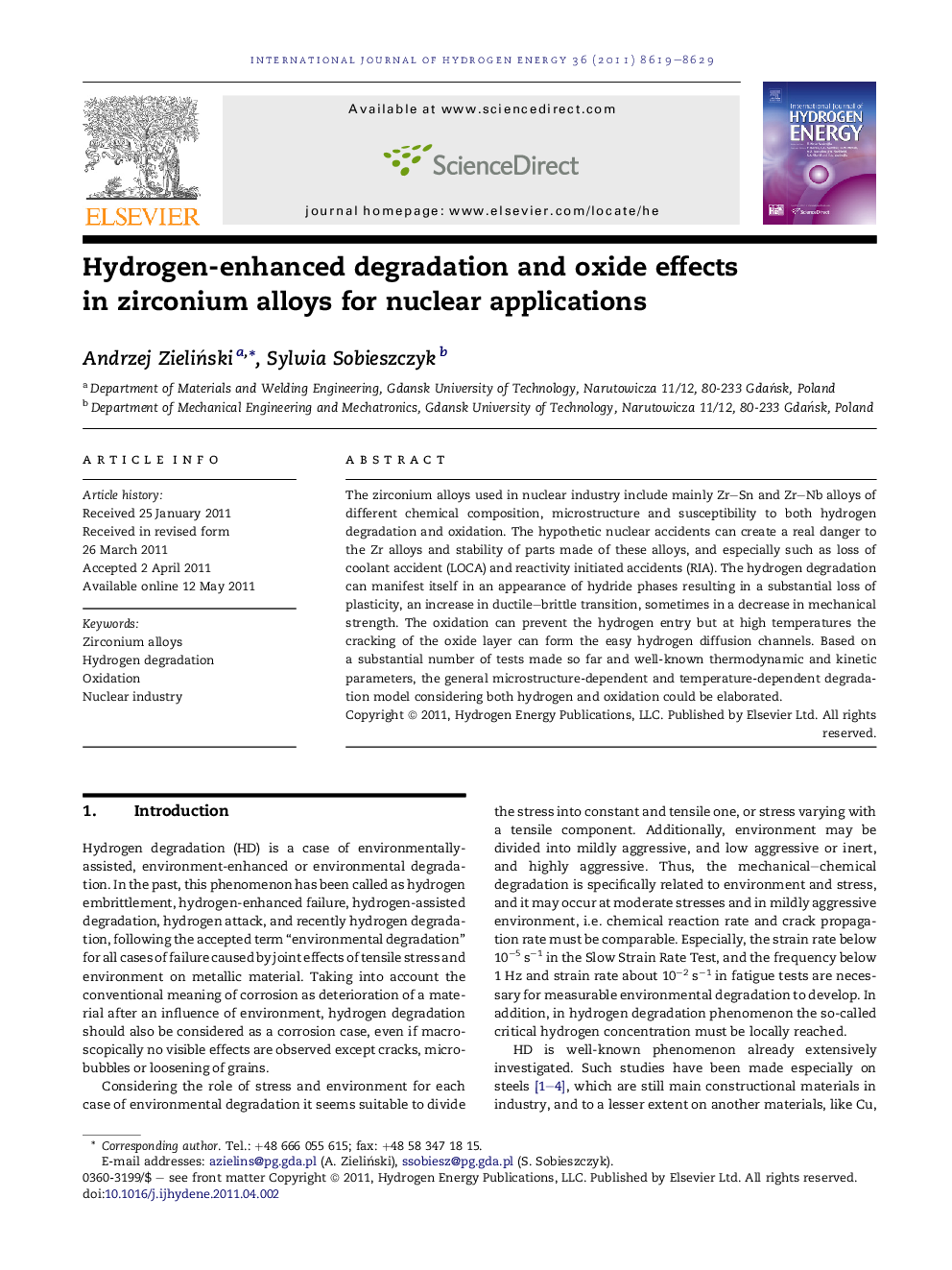| Article ID | Journal | Published Year | Pages | File Type |
|---|---|---|---|---|
| 1279180 | International Journal of Hydrogen Energy | 2011 | 11 Pages |
The zirconium alloys used in nuclear industry include mainly Zr–Sn and Zr–Nb alloys of different chemical composition, microstructure and susceptibility to both hydrogen degradation and oxidation. The hypothetic nuclear accidents can create a real danger to the Zr alloys and stability of parts made of these alloys, and especially such as loss of coolant accident (LOCA) and reactivity initiated accidents (RIA). The hydrogen degradation can manifest itself in an appearance of hydride phases resulting in a substantial loss of plasticity, an increase in ductile–brittle transition, sometimes in a decrease in mechanical strength. The oxidation can prevent the hydrogen entry but at high temperatures the cracking of the oxide layer can form the easy hydrogen diffusion channels. Based on a substantial number of tests made so far and well-known thermodynamic and kinetic parameters, the general microstructure-dependent and temperature-dependent degradation model considering both hydrogen and oxidation could be elaborated.
► Hydrogen may be dangerous for mechanical integration of zirconium parts. ► Hydrogen degradation occurs as a loss of plasticity and delayed cracking. ► Main environmental determinants are hydrogen and oxygen pressure, and temperature. ► Oxide films are brittle and porous at high temperatures, enhancing hydrogen entry. ► The new Zr alloys should possess oxide layers more stable at high temperatures.
